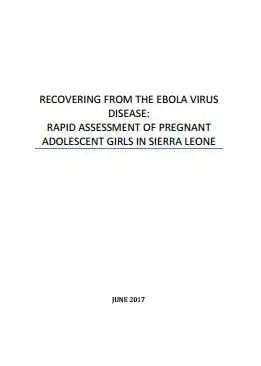The assessment of adolescent pregnancy in Sierra Leone was undertaken in order to map and identify adolescent girls (aged 10-19 years) who got pregnant during the Ebola crisis, to enable an understanding of the reproductive health needs and well-being of adolescent girls in order to inform programming. Pregnancy is one of the leading causes of adolescent deaths in sub-Saharan Africa, where adolescents bear the greatest burden of pregnancy-related morbidity and mortality. The adolescent birth rate in Sierra Leone is higher than average for sub-Saharan Africa. Key factors associated with adolescent pregnancy are age at first sex, early marriage, contraceptive use and education.
The study surveyed adolescent girls who were pregnant or had recently delivered in the 14 districts of Sierra Leone to assess their health, education and social welfare contexts. Data collection was conducted in July and August 2015 in 12 districts — Bo, Bombali, Bonthe, Kailahun, Kenema, Kono, Koinadugu, Moyamba, Pujehun, Tonkolili, Western Area Urban, Western Area Rural — and in two districts (Kambia and Port Loko) in November and December 2015.


